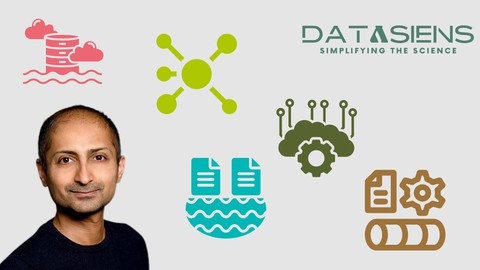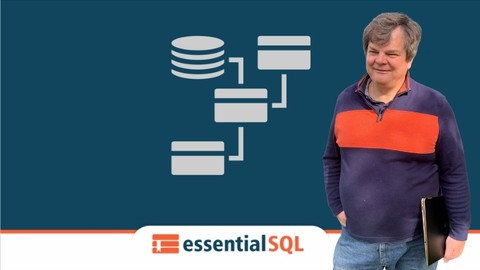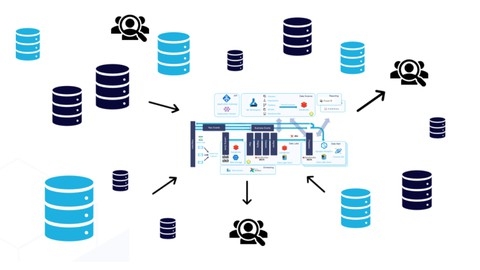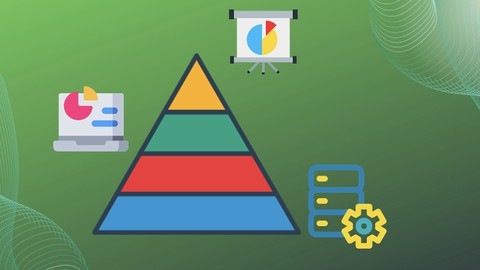Data architecture is the foundation upon which all data-driven initiatives are built.
It encompasses the design, structure, and management of data assets within an organization, ensuring data is accessible, reliable, and secure.
By understanding data architecture, you can unlock the true potential of your data, enabling informed decision-making, improved business processes, and innovative solutions.
Whether you’re aspiring to become a data scientist, data engineer, or simply want to enhance your data literacy, learning data architecture is a crucial step.
With the growing importance of data in today’s world, finding a comprehensive and well-structured data architecture course is essential.
You’re likely seeking a course that not only covers the theoretical foundations but also provides practical skills and real-world applications.
The sheer number of options available online can make this search feel overwhelming, leaving you unsure of where to begin your learning journey.
Based on our thorough review of numerous courses, we’ve identified Data Architecture for Data Scientists as the best overall data architecture course on Udemy.
This course provides a comprehensive overview of data architecture concepts, tailored specifically for data scientists.
It covers various data types, storage methods, and governance approaches, equipping you with the knowledge to design and implement effective data solutions for your machine learning projects.
However, this is just one of the many excellent data architecture courses available on Udemy.
Keep reading to explore other top-rated options that cater to different learning styles and specific areas of interest within data architecture.
From foundational courses for beginners to specialized programs focusing on data lakes, data warehouses, and emerging trends like data mesh, we’ve compiled a list of recommendations to help you find the perfect course for your needs.
Data Architecture for Data Scientists
This course teaches you about different data types like structured data organized in tables and unstructured data like text files.
You’ll even dive into semi-structured data, like JSON and XML, and discover how these data types are used in machine learning projects, potentially using frameworks like TensorFlow and PyTorch.
The course then guides you through different data storage and management methods, like data warehouses for storing large datasets and data lakes for storing all types of data in cloud environments like Google Cloud Platform or AWS.
You’ll also learn about tools like S3 for cloud storage.
You’ll then explore data lakehouses, combining the best of data warehouses and data lakes, and delve into data governance using the Data Mesh approach with concepts like data contracts, data catalogs, and data fabrics.
The course also covers handling streaming data, like real-time information from sensors, using tools like Kafka and understanding different architectures like Lambda and Kappa.
You’ll discover how data architecture supports machine learning, exploring specialized databases like feature stores and vector databases.
Finally, you’ll learn to decide the best data architecture approach for different situations using a decision-making flowchart and real-world use case examples.
This will give you a strong foundation in data architecture, a critical skill for anyone working with data.
EssentialSQL: Data Modeling & Relational Data Architecture
This course teaches you the basics of data architecture, starting with a case study using a “Pizza DB” to show you how SQL works in the real world.
You will learn how to define requirements for data modeling and use tools like ER diagrams to show relationships between different entities.
The course also introduces you to different types of SQL so you can pick the best one for your needs.
You will then discover how to build conceptual data models, which act as blueprints for your database.
This means understanding the different parts of a conceptual model and how to create them.
After you’ve learned conceptual modeling, you’ll move on to relational table design, where you’ll learn to turn your ideas into a well-structured database.
This includes learning about database normalization, a process that makes sure your data is accurate and efficient.
Finally, you will learn a practical approach to database design by creating your own database using Data Definition Language (DDL).
You will learn to create tables, define columns, and use constraints to ensure your data is accurate.
You will then review the entire process of data modeling, solidifying your understanding of this key part of data architecture.
Every (big) data architecture is the same
This course teaches you how all data architectures follow a similar pattern, a blueprint you can use to understand any data system.
You’ll discover how data moves through different stages: the ingestion layer where it enters, the processing layer where it’s cleaned and organized, and the serving layer where it’s accessed by users.
You’ll learn how micro-services help integrate data and how ETL (Extract, Transform, Load) processes prepare data for analysis.
You’ll gain practical skills by seeing how this blueprint applies to real-world situations.
For example, you’ll learn how data architecture helps HR tech with recruitment by analyzing candidate data or how it enables real-time analysis of IoT sensor data.
You’ll even explore data mesh, a modern approach to managing data flexibly.
The course covers a lot of ground, from the basics of data flow to advanced concepts like data mesh and micro-services, making it suitable for different levels of experience.
You’ll gain practical knowledge, not just theory, through concrete examples in areas like HR tech, IoT sensor data, log monitoring, and media and behavioral tracking.
Data Architecture Mastery and Microsoft Fabric
This course takes you on a journey through the world of data architecture.
You start with the basics, learning what data architecture is and why it’s important in any organization that uses data.
You then dive into data modeling, where you learn to create visual representations of how data is structured.
You’ll become familiar with databases and how to manage them.
You then explore the world of Big Data and data warehousing.
You’ll learn how to handle massive amounts of data and turn them into useful information.
The course also covers how to integrate data from different sources, ensuring it’s clean and ready for analysis.
Plus, you’ll learn about data governance and security, making sure sensitive information is protected.
You’ll then explore new trends in data architecture, like using cloud-based systems and how AI and machine learning play a role.
You’ll learn about Medallion Architecture, a framework for organizing large amounts of data.
You’ll gain hands-on experience with Microsoft Fabric, a powerful tool for managing and analyzing data.
You’ll learn how to create lakehouses and data warehouses and use Power BI to create reports and dashboards.
Finally, you’ll explore the different parts of Microsoft Fabric, including Onelake, Data Factory, and real-time analytics.
This course provides you with a strong foundation in data architecture and the skills to use Microsoft Fabric to manage and analyze data effectively.
Data Mesh : Building a Modern Data Architecture
This course takes you on a journey starting with the problems of old-school, centralized data management.
You quickly see why data warehouses and data lakes struggle to keep up in a world hungry for data.
The course then introduces you to Data Mesh, a whole new way of thinking about data.
You discover how Data Mesh pushes for each team to own its data, treating it like a valuable product.
This means building a system where everyone can easily access and use the data they need.
You’ll go beyond just the theory.
The course gives you a hands-on understanding of the “Data-Driven Product Mindset”.
Imagine building a data product from the ground up!
You’ll learn to see data ownership from different angles and even how to get everyone on board with sharing data.
You’ll also learn practical tricks like how to adapt your company’s current systems to work with Data Mesh and how to make sure your data mesh can grow smoothly.
Don’t worry, you won’t be left to figure things out on your own.
You’ll discover “Federated Computational Data Governance” - a fancy way of saying how you keep your data consistent and secure across different teams.
The course even points out common traps people fall into with Data Mesh, like giving too much responsibility to a few people or trying to build the ‘perfect’ system right away (hint: it’s better to start small and grow).
You’ll learn from real-world examples and best practices used by other companies.
Data Lake, Lakehouse, Data Warehouse Fundamentals in 60 mins
This data architecture course covers a lot, from the basics to the really complex stuff.
You’ll start with the fundamentals, like different types of data – structured, semi-structured, and unstructured – and how they’re used in cloud computing.
You will then learn about data preparation methods like ETL and dive into different types of analytics, from descriptive to prescriptive analytics.
This course also teaches you how to choose the right tools for the job, comparing and contrasting data warehouses, data lakes, and data lakehouses.
You will develop a strong foundation in modern data management practices, like data fabric and data mesh.
These concepts are crucial for anyone working with large datasets, and the course explains how to use them.
You’ll also learn about the challenges of data science in different environments, like how to use data warehouses, data lakes, and data lakehouses for your projects.
The course also prepares you for real-world data science scenarios by teaching you about ML Ops, confidential computing, and the complexities of real-time analytics.
This course covers the challenges of digital transformation and cloud adoption.
You will learn about common cloud mistakes to avoid and discover how to navigate hybrid cloud environments.
The course also covers the challenges of hiring data science professionals and offers strategies for successful outsourcing.
You’ll gain a well-rounded understanding of how to use Maslow’s Hierarchy of Needs to successfully implement digital transformation strategies in a company.
Essentials about Data Architecture
This course teaches you about data and how it moves through its entire lifecycle, from creation to archiving.
You discover how professionals process data to make it useful, how they store it securely, and how they analyze it to find hidden patterns.
You also learn how to present your data findings in clear reports.
The course then dives into data architecture, explaining its history, principles, and benefits.
You’ll discover different data architecture patterns, like data warehouses, which are great for analyzing structured data, and data lakes, which are more flexible and can handle various data types.
You’ll also explore newer concepts like data mesh and data fabric, designed for today’s complex data landscape.
Through real-world examples, you will compare and contrast different data architecture approaches.
You will develop the skills to design and implement effective data solutions for your own projects, becoming a valuable asset to any organization that uses data.
Data Lake: Design, Architecture, and Implementation
This course gives you a strong understanding of Data Lakes and how they stack up against other data storage methods, like Data Warehouses, Databases, and Data Marts.
You learn the pros and cons of each approach, so you know when to choose a Data Lake.
You then dive deep into Data Lake architecture, exploring each layer from data sources and ingestion to storage, metadata management, preprocessing, and analytics.
You also discover how to keep your data safe and secure with proper governance.
The course explores different ways to deploy a Data Lake, including on-premise, cloud, and hybrid models.
You will examine real-world examples from companies like Netflix, LinkedIn, and Kellogg’s, showing how they use Data Lakes to gain insights from their data to make better business decisions.
These real-world cases bring the concepts to life, showing how Data Lakes solve common business challenges.
The course doesn’t just stop at theory; it dives into practical implementation.
You explore various aspects of implementing a Data Lake, including the best security practices to protect valuable data.
The course then introduces popular Data Lake technologies like Hadoop, Spark, and Kafka.
You also gain insights into leading vendors in the Data Lake space, preparing you to evaluate different solutions.








